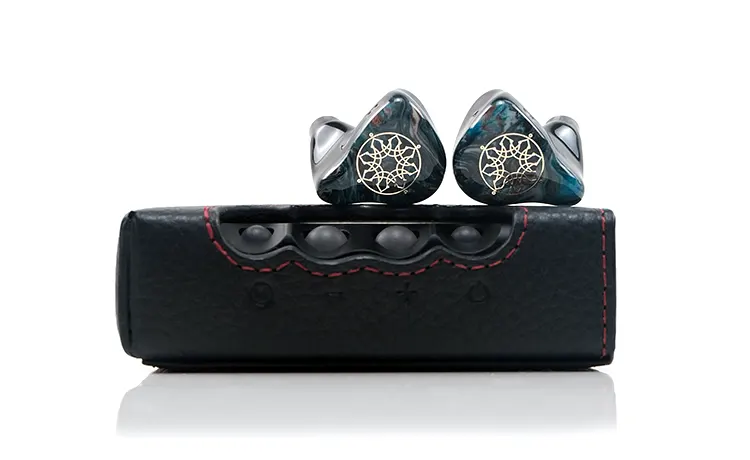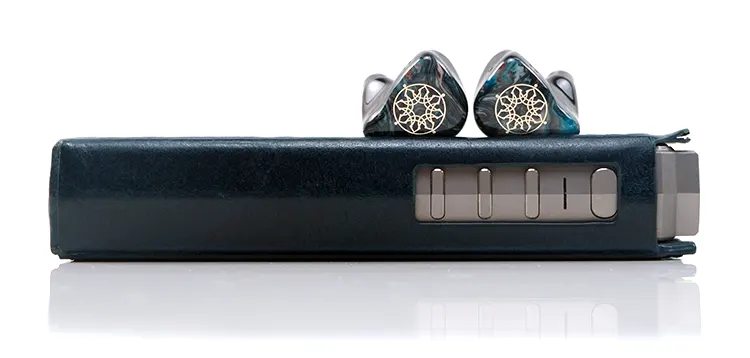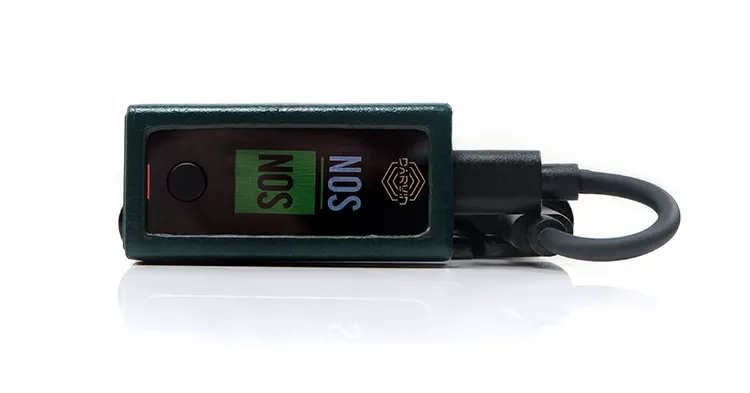Sound Impressions
The following sound impressions of the SR11 were completed using a mix of the Cayin N8ii, the HiBy RS8, and the Chord Electronics Mojo 2.
Summary
I came into this listening session(s) with no real expectations and not sensing any hype at all from the usual community voices. Well, I can safely say the SWEEAR SR11 could well be a sleeper hit for 2023, it is that good.
This is a ‘busy sounding’ yet very coherent performer, meaning it is dynamic and impactful with impressive articulation and resolution in all directions.
Is it the widest more ambient sound signature? I suspect not, there are models like the Viking Ragnar that project a more atmospheric vibe and monitors such as the VE EXT do yield more sub-bass rumble and a bit more sparkle.
What the SR11 offers is a compelling mix of resolution and speed combined with a really impressive level of impact from its low-end dynamic driver/BA woofer combo. All of this whilst at the same time retaining a very neutral to natural level of coloration.
SWEEAR has resisted letting the dynamic driver rip so it is not sub-bass biased but still rather weighty with a powerful punch which I presume is being pulled from those BA woofers. The emphasis here is ‘PRaT’ and balance, nothing too sluggish, overly warm, or dominating.
Mids are relatively forward, and articulate but slightly light in weight. The pinna gain is good with upper-midrange energy and a gently dropping but nicely weighted treble. In truth, this is a nice balance of refined energy, nothing too sharp or overly rounded sounding.
Frequency Response
The SR11 extends really well but I suspect you will pick up on a very slight mid-bass bias over sub-bass rumble.
The sub-bass elevation from 20-80Hz sounds relatively linear with the peak closer to 80-120Hz before it starts to drop. It has less of a 100-300Hz lift compared to something like the EXT so the overall bass weight is more balanced and punchy rather than warm and dense.
From there it’s a gentle lift up to the lower mids, nothing too strong until you hit the 1-4k range where the gain is noticeable with a solid vocal presence.
It is not as pushed as the Tesseract around the 1-2k range, something which the Tesseract is known for, rather it stays elevated through the upper-mids to around 4k with some additional minor bumps in the lower treble but nothing peaky.
There is some really good extension on the highs but it’s not overly cooked in the 8-10k range or as ‘strong-willed’ as the Kublai Khan’s piezoelectric driver. The EST drivers do a good job of creating some necessary headroom and a light dash of sparkling overtones but they are not as prevalent as the EXT EST drivers in terms of coloration.
Timbre
The timbral mix from the SR11 presentation is an engrossing mix of impact and punch on the lows combined with pristine mids and ethereal highs.
It’s not hugely warm on the lows but there is enough warmth to counter the cleaner delivery from the mids and highs BA drivers which are fleet of foot and also slightly drier in their coloration.
The PRaT though is excellent with that mid-bass punch resonating strongly when called upon. You can get an excellent fundamental with lower pitching percussion and string instruments but even more so with high BPM synth bass notes which it seems to excel on more than ambient deeper sub-bass equivalents.
Lower-mid instrumental timbre and weight are more to the neutral or slightly light side but make up for it in terms of clarity and speed. Even dynamic speedy metal guitar chord plucks and especially overlying solos resonate in a very clean and precise manner. You will find no smear from the SR11.
The further up the range you got the lighter and more delicate the SR11 starts to sound. It remains resolutely neutral to my ear and more to the accurate side of things as well as boarding on the ethereal once you slip well into the highs.
One thing to note is the lack of exaggerated 8-10k or an attempt to whiten the upper treble tuning. That is a blessed relief not to hear that smear all over cymbals and high hats often leaving them sounding overly thin and hot. There is energy for sure, but it’s more towards the acceptable side of pleasurable listening.
Staging & Dynamics
I love the dynamics of the SR11 and I do not simply mean the punchy bass response but I include the speed and precision of the notes and how well they resonate well above that range.
I have been listening to a lot of Hayley Williams’s solo work of late and the SR11 is tailor-made for this kind of acrobatic singing style combined with at times a very sparse and percussion-heavy mix in her recordings.
If you are a Police fan this should resonate strongly with you, the ability to understand how to use space and quiet moments along with dynamic bursts to create compelling music. That is where the SR11 sits and excels. It does not miss a single subtle inflection in the background or smooth over a dynamic burst down through the middle or on the lows.
The overall staging quality is complex and micro-detail orientated though it is not quite as deep and powerful as some of the hybrid competition at this price range. However, its impact and speed from the mix of BA and the dynamic driver are compelling and noticeable.
Vocals will sit forward but do not step over the mark to shouty territory whereas the headroom is excellent but again, nothing overly pushed to create too much treble bearing down on that lively midrange.
If there is one area some might look for it is the lower-mids which lack a bit of body and presence relative to the vocal performance but again, that speed and clarity mean it is not a disappearing act either.
Synergy
Efficiency
The SWEAR SR11 is rated at 14Ω and 112 dB @1kHz mW and in truth, when placed against our compared EST-equipped monitors, only the Nostalgia Audio Tesseract, rated at 118dB @ 1kHz 1mW, proved to be considerably more sensitive.
Both the Vision Ears EXT and the Noble Audio Kublai Khan required a much higher volume setting to sound optimal from our test DAPs which included balanced low-gain connections from the HiBy RS8 and the Cayin N8ii.
Dongles will pose no issue either with the SR11 though, bar the SE-only HiBy FC6, I do recommend switching over to the 4.4mm balanced connector option on the stock cable and high gain to maximize the performance.
Not that you cannot do low gain single-ended with the SR11, but rather almost every dongle I have tried in high gain with IEMs offers improved separation and dynamics and the SR11 is no exception to this case.
Background hiss is not an issue either with any of the DAPs and dongles tested with the SR11 in either SE or balanced output.
DAP Pairings
I found the SWEEAR SR11’s sound signature to be very flexible and very easy to pair with almost every DAP I tested. I do feel though that its dynamic driver sounds at its best when you feed it some improved voltage and try to combine with it some meat on the bones of the SR11’s midrange performance.
For example, the P+ mode from the N8ii and the Turbo Mode on the RS8 produce an improved perception of snap and impact from the lows on the SR11 compared to both modes being turned off.
You do not have to go balanced with every source to get that same level of dynamic impact. Switching to the SE 3.5mm connection for the cable and pairing the SR11 with the Chord Electronics Mojo 2 produced some of the cleanest high-impact lows out of all of the paired sources.
Unfortunately, the Mojo 2 does less well with vocal presence and sparkle. It runs rather flatter with less upper-mid bloom with the SR11 pairing compared to the N8ii and the iBasso DX320 MAX Ti for example.
Out of all of the DAP pairings, these two teased out either the most pleasing timbre from the SR11 with the Cayin N8ii or the most expansive and resolving from the DX320 MAX Ti. I give a slight edge to the DX320 MAX Ti for dynamics but for better bass body and warmth, I would probably bias to the N8ii.
The RS8 comes close to these two but the more neutral midrange and vocal placement played less well to my own preference for bold and exuberant vocal performances, especially if it is accompanied by a punchy dynamic driver such as this one.
Dongle Pairings
I tested four dongles with some very distinct preferences more so than the DAP lineup. The four dongles included the Cayin RU7 and the R-2R RU6, the HiBy FC6, and the Questyle M15.
Out of those four the clear winners were the RU7 and the FC6 but for differing reasons. The RU7 delivered a lot of nice space with a wide holographic soundstage on the SR11.
Of the four it sounded the most refined but perhaps a little more neutral in imaging but given the SR11 brings its own bass and vocal imaging strengths to the table this creates a very balanced smooth sound signature.
The FC6 was more colored but the SR11’s bass response on this pairing was very addictive. It is heavy and juicy with plenty of saturation in the timbre and a full-on vocal performance also. It is more intimate than the RU7 and not as refined but it’s more fun-sounding.
The RU6 felt a bit too soft for my tastes and slightly undercooked on the low-end presence and tightness. It does well with vocals and is a good choice for SR11 owners who want a smoother midrange.
The Questyle M15 felt congested in the midrange compared to the other 3. It has a nice firm bass response but a narrower midrange and less headroom. It also sounded the most digital of the four combos with the SR11. Overall, a boring pairing for my tastes.




